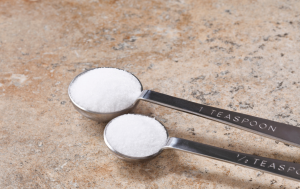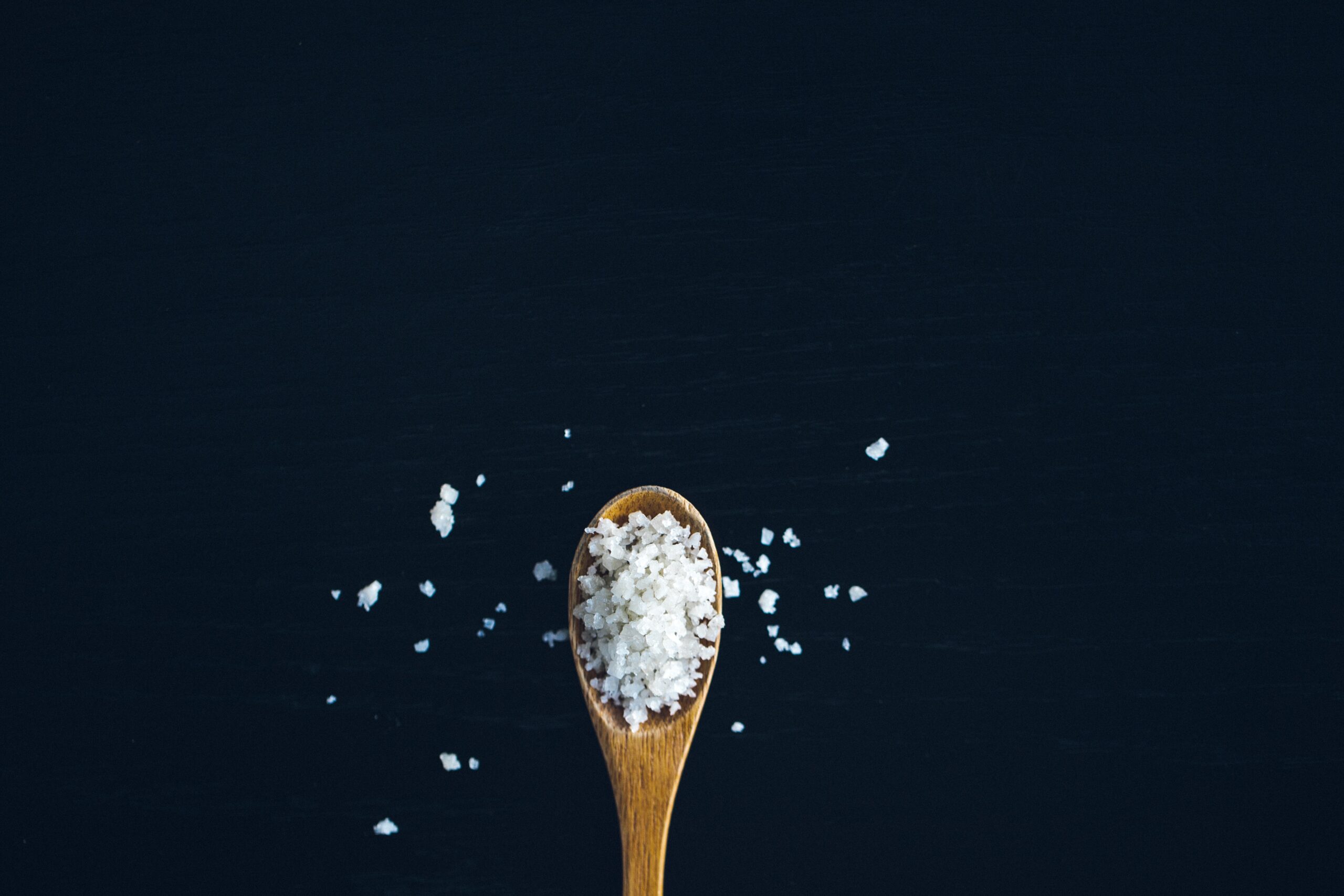Is this ONE THING keeping you overweight? It could be excess sodium that’s keeping you from reaching your goal weight.
Wondering how much weight you’re holding onto by eating too much salt?
It’s probably heaps more than you may realize. Let me tell you, it shocked me to learn the answer to this question when I recently did a little digging to help out a client I’m working with.
This fellow, we’ll call him Jim, is a rockstar when it comes to consistently hitting his daily macro and calorie targets.
But… he is a great example of why macros are only part of a much bigger picture. The micronutrients, vitamins and minerals, are super important too. Here’s what we discovered about his micronutrients –
His sodium levels were through the roof!
Optimal sodium level is 1500 mg. Anything over 2300 mg is considered unsafe and increases risk of high blood pressure, heart attacks and stroke.
Jim’s levels were as high as 6000 mg some days YIKES! His daily average came in at just over 3500 mg, more than double the optimal amount, and 1200 mg over the unsafe amount.

Where’s all this extra sodium coming from?
Well, it turns out that Jim (like many of us) is a really busy guy who needs a quick easy meal he can throw in the microwave for a healthy lunch. So he’s been having a packaged meal or two every day that – albeit whole foods based and from pretty popular brands considered ‘healthy’ – they’re still packaged… which means quite high amounts of salt need to be added to preserve the shelf life. Crazy, right?
Does that translate directly into weight gain or inability to lose weight?
You bet it does!
For every 400 mg of excess sodium (above the optimal 1500 mg), your body retains or holds on to about 4 cups of water! And that translates into about 2lbs on the scale.
So where does Jim fare in this estimation… not good.
At an average of 2000 mg of excess sodium daily, he’s retaining about 20 cups of water and that translates to 10 lbs on the scale!
Think about that for a moment.
And now think about this… even scarier than the weight, by far, is the risk of high blood pressure, heart attacks, and stroke.
Watch Your Sodium Intake, but Don’t Eliminate It
You can check your sodium levels by tracking your diet for a few days in a tracker app like My Fitness Pal or the one we use in our app with our clients, to see where your daily sodium levels usually come in. Awareness leads to action, so if you need help tracking and getting this awareness, don’t hesitate to get in touch with us.
Also, check the labels on foods you eat. Remember, packaged foods will often contain more sodium than whole, unprocessed foods.
The Solution
We’re solutions-based, so of course we strategized with Jim to find a practical alternate to his quick and easy lunch meals. The solution – he and his wife spend time in the kitchen to cook healthy meals for dinner after their work day. They’re putting in the time already cooking most days, now they just cook larger amounts so that Jim can ‘package’ up his own leftovers and simply reheat the next day for work.
His meals typically have about the same amounts of calories and macros (carbs, protein, and fats), but now they’re waaaay lower in sodium. Jim is feeling better, is losing weight, and has peace of mind with regards to his cardiovascular health. Yay Jim!
Reference used: https://healthyeating.sfgate.com/high-sodium-water-retention-7494.html

